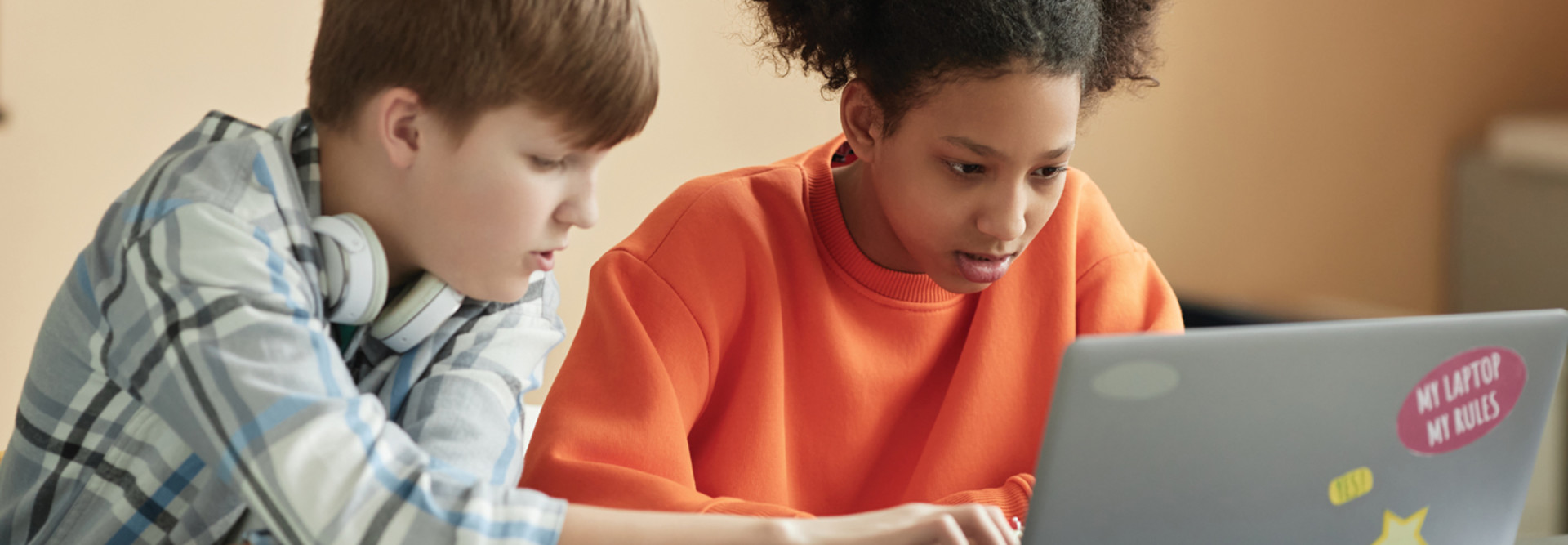A Focus on Authentic Learning and Student Safety with Digital Tools
A computer is a stand-alone piece of hardware, not a technology that is going to transform learning. The magic of digital tools comes when technology is integrated into authentic learning. Schools need to leverage hardware and access to help students understand the ethical use of technology and allow them to dabble in appropriate digital solutions.
This also means that safety is an important part of the ISTE standards for school leadership to consider. Schools need to select safe environments for teaching and learning, like Google Workspace for Education, which is an enclosed Google space. From esports to everyday use of school devices, students should learn that, while they’re generally safe in the programs the school provides, there are dangers and consequences with certain technologies they’ll encounter outside of school.
The student section of the ISTE standards covers all of these integrations, lessons and best practices, using varying language to frame them for students in kindergarten through high school. Just because protecting student data looks different for young learners than for those in 12th grade doesn’t mean it’s any less important.
How Equity Factors into the National Educational Technology Plan
Another highly anticipated revision for ed tech guidance was released earlier this year as well. The National Educational Technology Plan was updated in January, and it made waves with a new format. The revised NETP veered from its usual state-of-the-union approach and instead focused on three digital divides in K–12 education.
The ISTE standards will also fit this larger theme of equitable learning opportunities and access for students across K–12 environments. As districts look to create strategic plans for the student experience, inclusive of technology adoption, the student section of the ISTE standards will offer guidelines for doing so in a way that is effective and impactful.
As schools look into adopting new technologies, whether those are AI-based or something else, they must also support the instruction that goes with these tools, or the technology becomes useless. The tools must support the content; so, it’s not the tools that are the hard part for districts, it’s effective integration.
Universal Design for Learning will also drive technology adoption and use in schools. There are some state requirements influencing that, but UDL is integrated into the NETP and is not going away anytime soon. It, too, is good for all students and allows student choice and opportunity, which means they can leverage technology to demonstrate their mastery and competency.
RELATED: Get started with UDL as a district technology leader.
Who Creates the Student Section of the ISTE Standards?
Updating the ISTE Standards is a time-consuming undertaking. There’s an ISTE board made up of district and organization leaders with a focus on diverse representation, including voices from urban districts, rural districts and everything in between.
The organization also makes sure districts are represented collectively and features the viewpoints of technology directors, curriculum leaders, special education departments and other functions within the school system.
The standards are updated in multiple stages. First there’s an initial review, followed by multiple layers of feedback, and more internal work and feedback after that. Because these standards need to last anywhere from six to 10 years, the individuals on this committee must be futuristic thinkers. Ultimately, the organization represents a global voice for student experience with technology.
This article is part of the ConnectIT: Bridging the Gap Between Education and Technology series. Please join the discussion on Twitter by using the #ConnectIT hashtag.







![[title]Connect IT: Bridging the Gap Between Education and Technology](http://www.edtechmagazine.com/k12/sites/default/files/articles/2014/05/connectit.jpg)




